

Master Thesis- Stadium Developments in Urban Environments: https://issuu.com/sophiafields/docs/booklet_issu
2024 A.I. for Healthy Spaces: https://issuu.com/sophiafields/docs/ai_competition?fr=xKAE9_zU1NQ



Master Thesis- Stadium Developments in Urban Environments: https://issuu.com/sophiafields/docs/booklet_issu
2024 A.I. for Healthy Spaces: https://issuu.com/sophiafields/docs/ai_competition?fr=xKAE9_zU1NQ
s308f592@Ku.edu
816.289.9155
Kansas City, MO
UNIVERSITY OF KANSAS
M. Arch
Cumulative GPA 4.0
STUDY ABROAD
Architecture in Southern Europe + Morocco
Summer 2023
Revit
Sketchup
Adobe Indesign
Adobe Illustrator
Adobe Photoshop AutoCAD Lumion Physical Modeling Drawing A.I. Wood Shop
AIAS Member
4th Year Portfolio Award Recipient
2024 A.I. for Healthy Spaces Competition winner
University of Kansas Chancellor Scholarship Recipient
Gamma Phi Beta Tshirt Chair
2022-2024
Fifth-year masters of architecture student at the University of Kansas with a lifelong passion for creativity and design. Driven by the opportunity to harness creative skills to develop impactful architectural solutions that enhance communities and improve daily life. Dedicated to advancing the field through innovative, thoughtful, and purpose-driven designs
ARCHITECTURAL INTERN
Kansas City, MO May 2024- Current
Participated in Co- Op Program to conduct a collaborative research thesis
Generated images for RFP’S, RFQ’S, and client presentations
Created and maintained BIM models in schematic design phase
Redesigned look books and marketing material
COMMISSIONED ART
SELF- RUN COMMISSIONED PAINTING ACCOUNT
Kansas City, MO
March 2020- Current
Created personalized artwork tailored to client preferences and feedback. Communicated professionally with clients to understand their vision and provide updates throughout the creative process.
Operated a self-run Instagram page to showcase artwork, attract clients, and manage commissions.
Kansas City, MO May 2021- August 2024
Customer service, serving and managing large parties, managing orders Task management, mutlitasking serving in restaurant setting as well as banquets, acting quick on my feet and solving problems efficiently
KEVIN HARDEN
Managing Partner / Retired
GastingerWalker& 817 Wyandotte St, Kansas City, MO 64105 kharden@gastingerwalker.com
SHANNON CRISS
Associate Professor/ Architect University of Kansas 1450 Jayhawk Blvd Lawrence, KS 66045 Scriss@ku.edu
YVONNE ROBERTS
Argyle Manager
Lakewood Oaks Country Club 651 NE St Andrews Cir, Lee’s Summit, MO 64064 (816) 382-7485

Multi-purpose
Highlighted Skills: Revit, Enscape, Photoshop, programming


Secondary Education
Highlighted Skills: Revit, Enscape, Rhino + Grasshopper, construction details, physical modeling
Secondary Education
Highlighted Skills: Revit, Enscape, Illustrator. construction details,




04 05 06
Higher Education
Highlighted skills: freehand & technical drawing, mixed media rendering
Educational Center Highlighted skills: phsyical modeling
Study Abroad | hand drawing Professional Experience Commissioned art | painting
YEAR 4.1
A mixed-use transitional housing edifice stands as a testament to the belief that when diverse paths converge, lives are not just impacted but undergo profound and transformative metamorphosis. This thoughtfully designed structure embodies the idea that housing can be more than just shelter—it can be a catalyst for change, growth, and renewed hope. Positioned at the heart of West Colfax, Denver, this innovative housing solution is purposefully designed to address the needs of the city’s most vulnerable populations. By integrating residential, community, and support spaces, it redefines the very essence of what it means to call a place “home,” creating a sanctuary where individuals can rebuild their lives, foster connections, and find stability in the midst of transition.






WEST COLFAX AVE




A SHIFT IN FOCUS FROM HOUSING PEOPLE TO HEALING PEOPLE
CHOICE COMMUNITY COMFORT + SUPPORT
THE 3 C’S OF DESIGNING FOR
Emphasize individual access, agency, and ownership
1. PERSONAL STORAGE UNITS
2. 1 BEDROOM UNIT
3. 2 BEDROOM UNIT









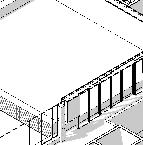











Create hub spaces that encourage camaraderie and collaboration- among residents as well as between residents and staff. Offer the opportunity to belong, helping residents to...
Rebuild relationships built on trust.
1. COMMUNITY KITCHEN
2. COMMUNITY GARDEN
3. COMMON SPACE
4. LAUNDRY ROOM
5. TRASH + CUSTODIAL
SUPPORT
Cultivate a comfortable spaces that support relaxation, self-soothing, stress management, and coping, as well as to cultivate physical health.
1. OFFICE / STAFF
2. THERAPY
3. WORKFORCE TRAINING
4. RETAIL STORE
5. COMMUNITY GARDEN
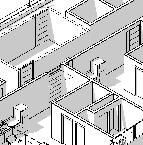

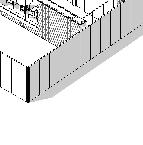










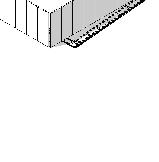

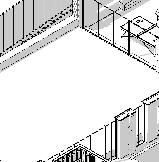
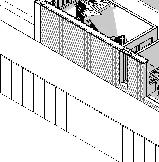



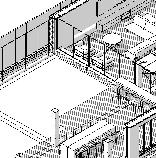











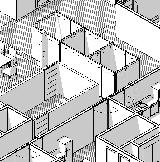






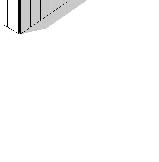

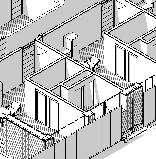
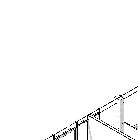





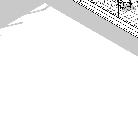





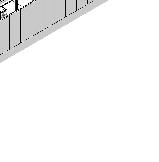





















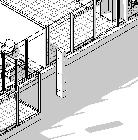















EAST - WEST SECTION













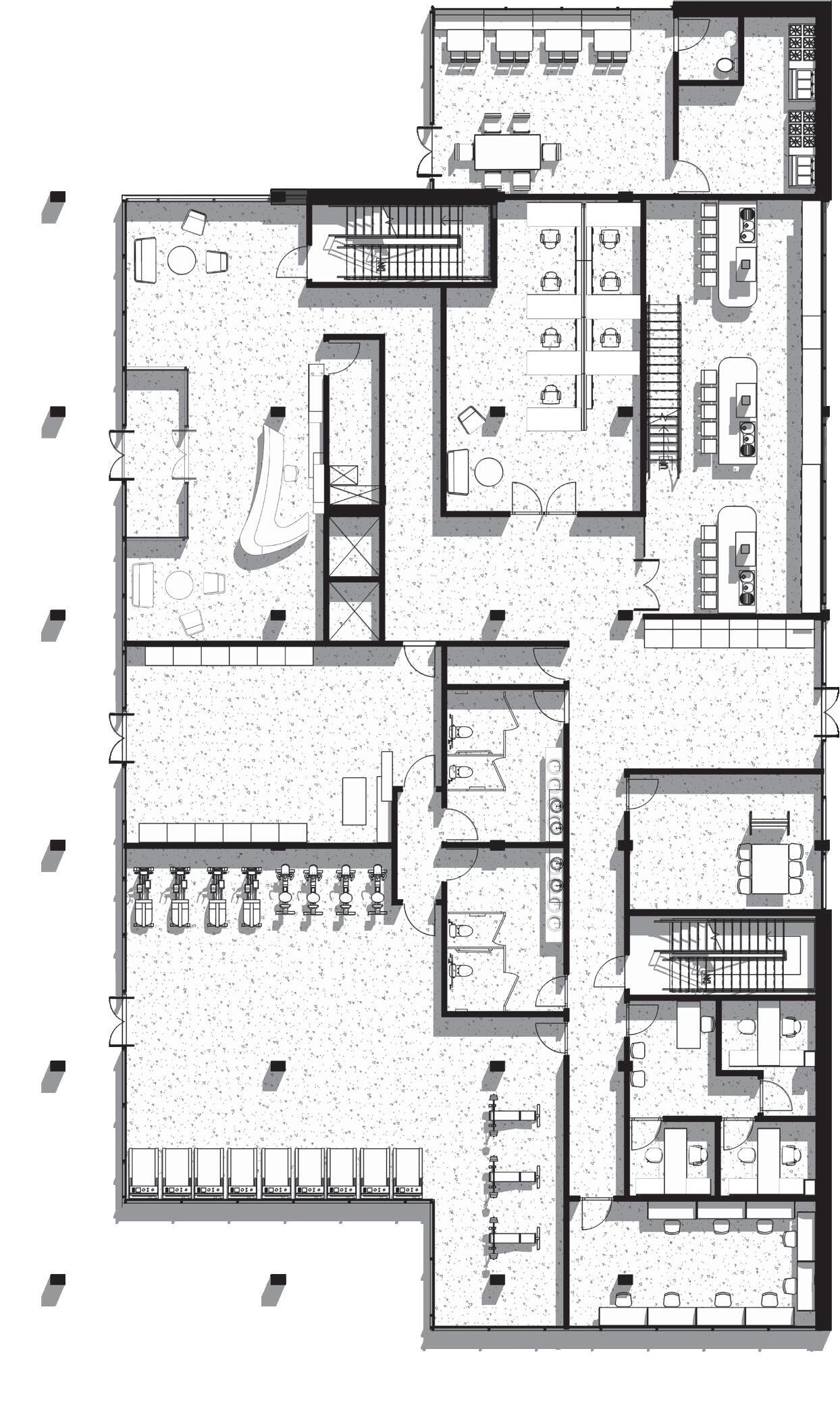

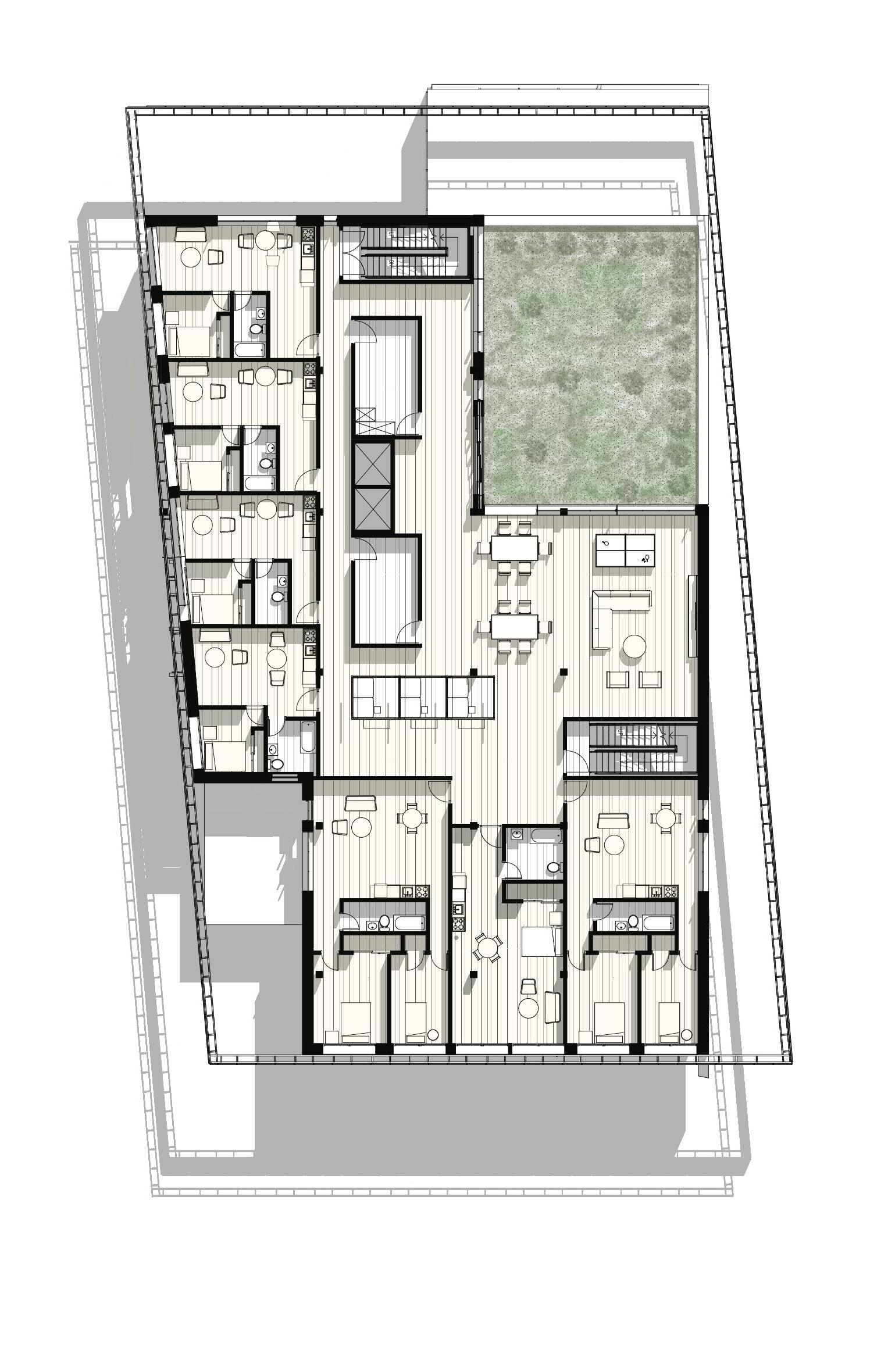



Green roof terraces are designed to bring the residential community together; provide access to fresh air and a place to inhabit in harmony with nature.
The community garden (terrace 03) serves as a community hub to inspire change for good, as well as to cultivate the native landscape.
The community kitchen acts to bring the residential community together, while cultivating connection and the opportunity to learn from one another, as well as offering access to food.
The therapy office on the ground level is an outlet for boosting the mental health of the residents, in line with Trauma Informed Design.
The use of glass curtain walls on the south face of the facade serve to enhance views in all semi- private community spaces, while operable windows are utilized on the north, east, and west facades in the units to allow for cross ventilation, enhancing the indoor air quality.
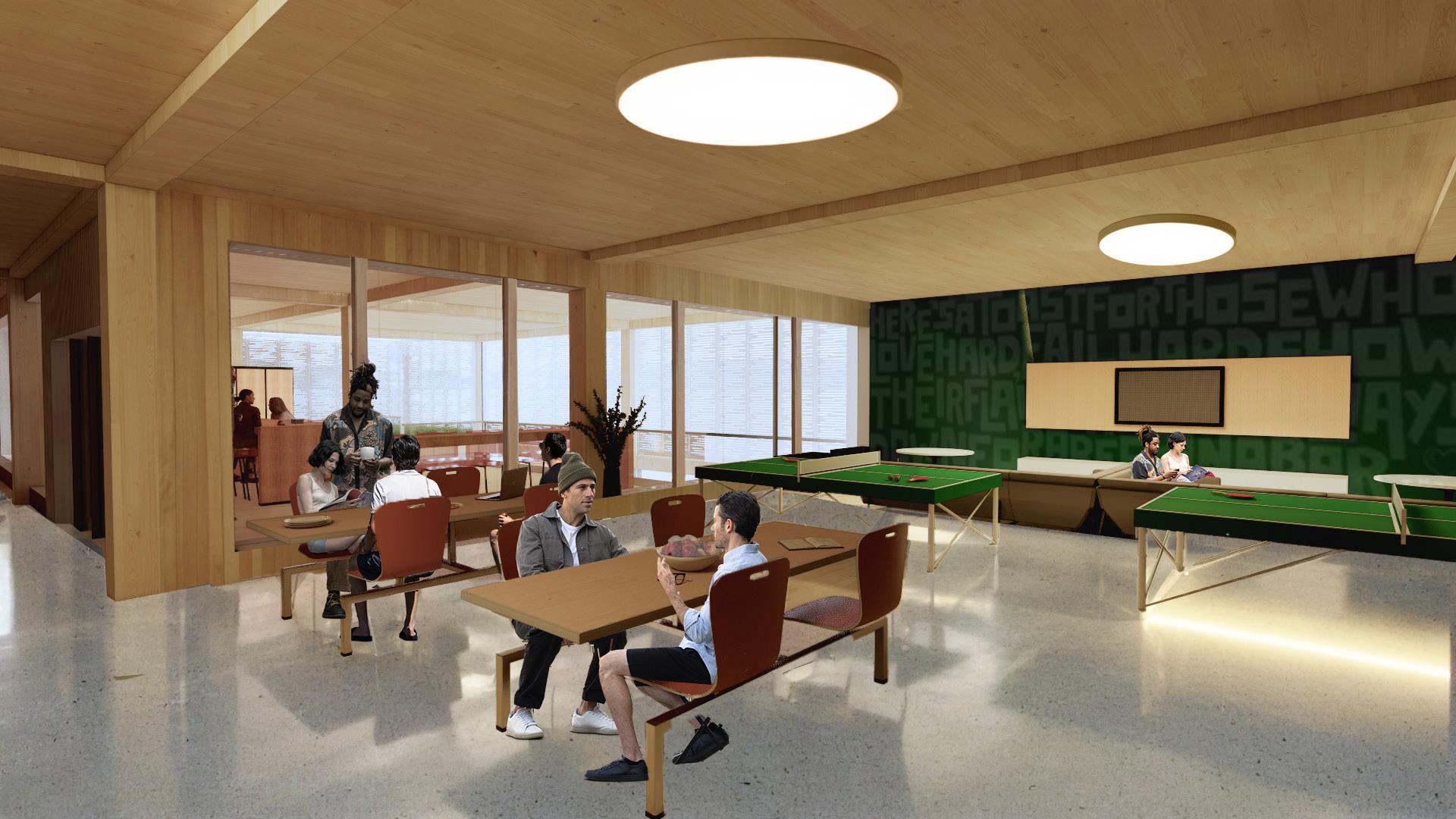


Green roof terraces
Reduction in air and noise pollution
Energy saving/ energy bill savings
High biodiversity
Insulation
Storm water collection
Urban green space
Reduces the urban heat island and improves air quality. They can also absorb flood waters to reduce flooding elsewhere.
Green space also provides more recreational opportunities and beautifies a community.

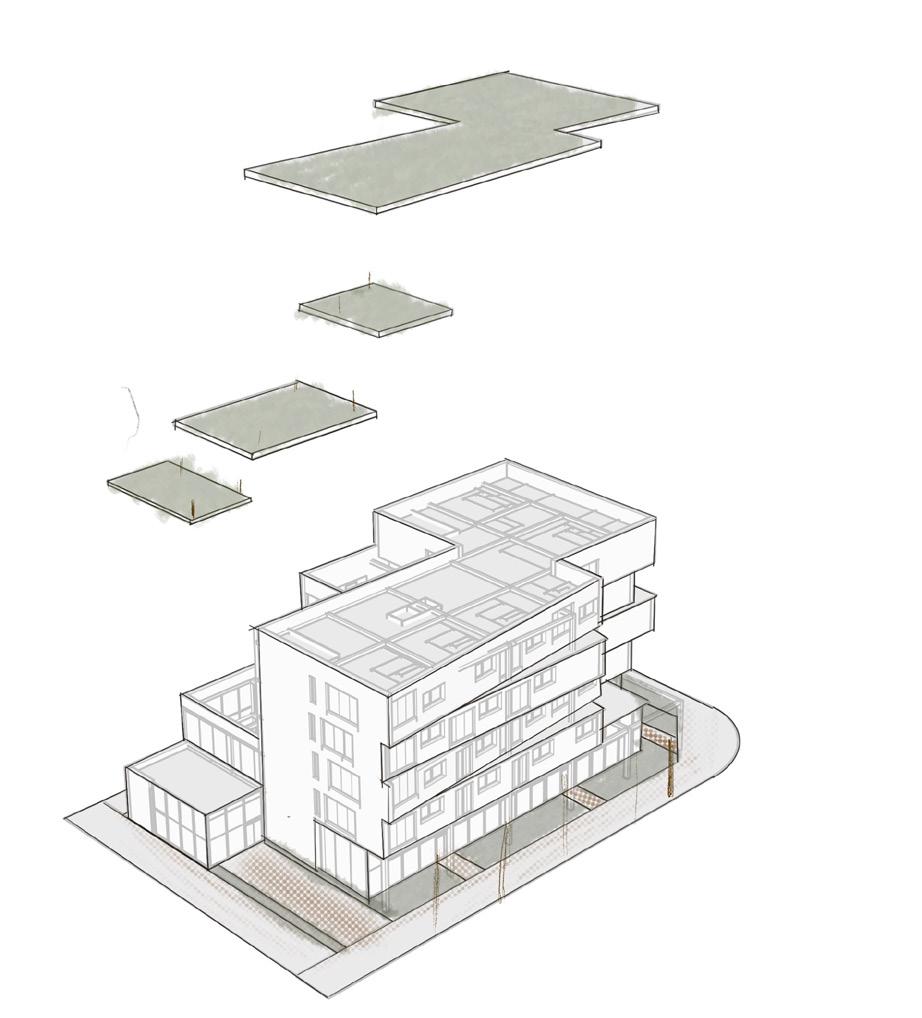

Converge stands as a testament to the transformative power of purposeful design, aligned with the values of West Colfax. It is a beacon of hope, embodying empathy, dignity, and enduring impact in the pursuit of addressing homelessness.



YEAR 4.2
In collaboration with Ava Hause
The “Where Learning Meets the Rainbow” secondary school project epitomizes a visionary approach to the evolution of educational and public service environments Informed by the dynamic needs of its users, particularly the student body, the project prioritizes empowerment, collaboration, and a profound connection with the natural world.
Central to the proposal is the deliberate creation of inviting spaces that foster community engagement and harmonize with the surrounding environment. Drawing inspiration from the concept of an educational village atop a public service nucleus, the architectural form embodies both functionality and symbolism.

Aesthetic coherence with the urban context is achieved through a design ethos centered on warmth and inclusivity. The strategic distribution of programs across two floors serves to disrupt the urban fabric, transforming it into a vibrant, accessible hub. Landscaping plays a pivotal role in reinforcing this ethos, with careful consideration given to creating seamless transitions between the built environment and nature. A widened sidewalk at the building’s frontage, coupled with an adjacent urban park, serves as an invitation for community interaction, while the internal courtyard provides a tranquil sanctuary that reconnects users with the surrounding open space.



Fill the boundaries to the site.

Push in back facades to create green space on the ground level
Extend for two stories to create educational “village” on top a public service mass.







THE URBAN PARK OFFERS A NATURAL SPACE OFF THE PRIMARY PEDESTRIAN PATH, SERVING ALL AGES
ROOFTOP GARDEN FOSTERS PROPER PLANT- LIFE EDUCATION TO FOSTER LONG- LASTING SUSTAINABILITY

NORTH-WEST ELEVATION

NORTH-EAST ELEVATION
INTERIOR COURTYARD NATURE, ALLOWING FOR

LARGE GLASS CURTAIN WALLS ALLOW FOR PASSIVE HEATING DURING THE WINTER + SERVE TO BREAK UP THE FIRST FLOOR MASS TO FOSTER A WELCOMING SPACE

GARAGE DOORS OFFER FLEXIBILITY TO EXTEND EDUCATION TO THE OUTDOORS
FURTHER CONNECTS USER TO FOR CROSS VENTILATION

NATIVE PLANTS ARE IMPLEMENTED TO LOWER THE URBAN HEAT ISLAND EFFECT



The ground floor serves as a dynamic, 24-hour community hub, promoting connectivity and lifelong learning. Its open layout centers around a courtyard, ensuring easy access to a gym, library, cafeteria, and labs. Designed for accessibility and inclusivity, the labs integrate seamlessly with public spaces, breaking barriers to education and fostering community engagement.

The floor plan centers on a courtyard, with glass walls blending indoors and outdoors. Natural light and vibrant panels animate circulation spaces, uniting architecture with nature. This interplay of transparency, light, and spatial flow reflects the core principle of uniting the built environment with nature.



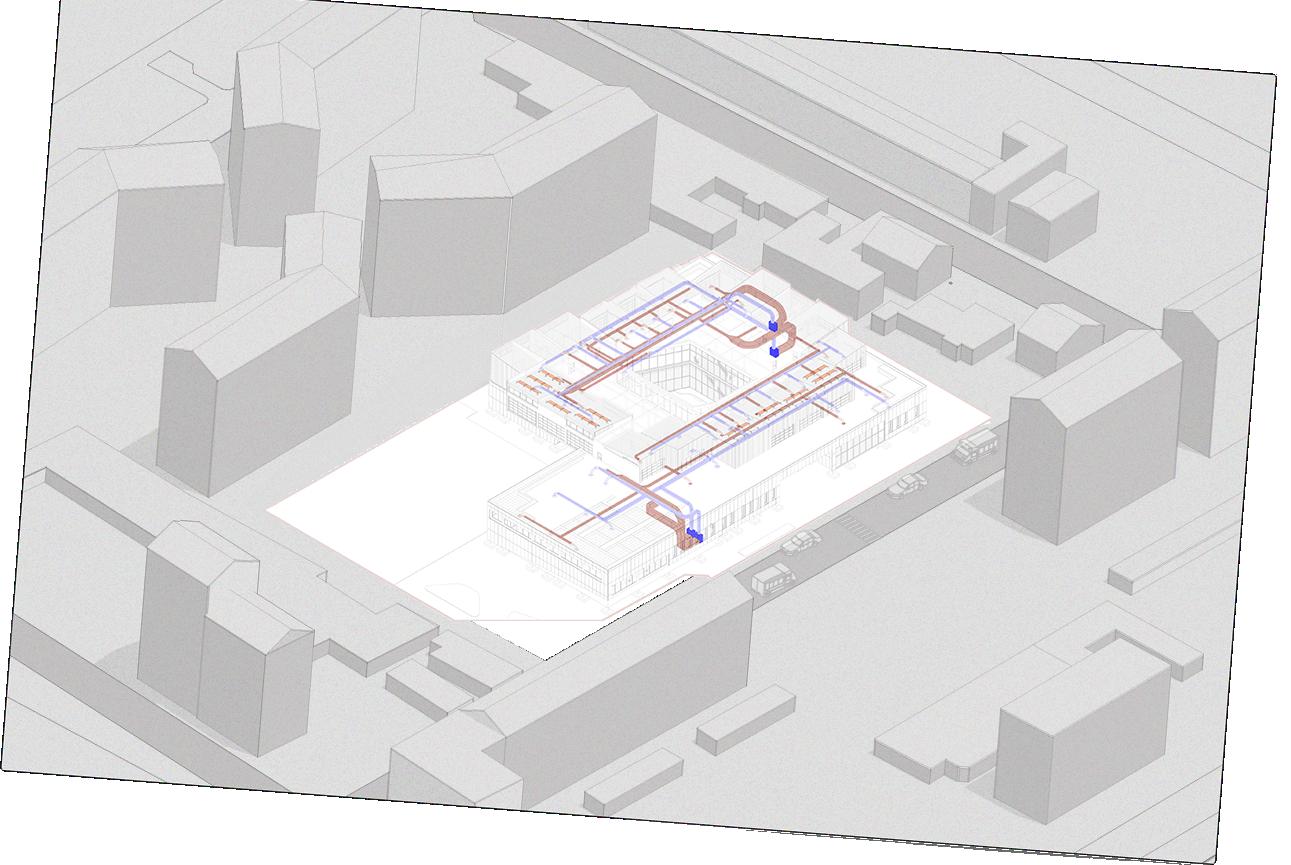








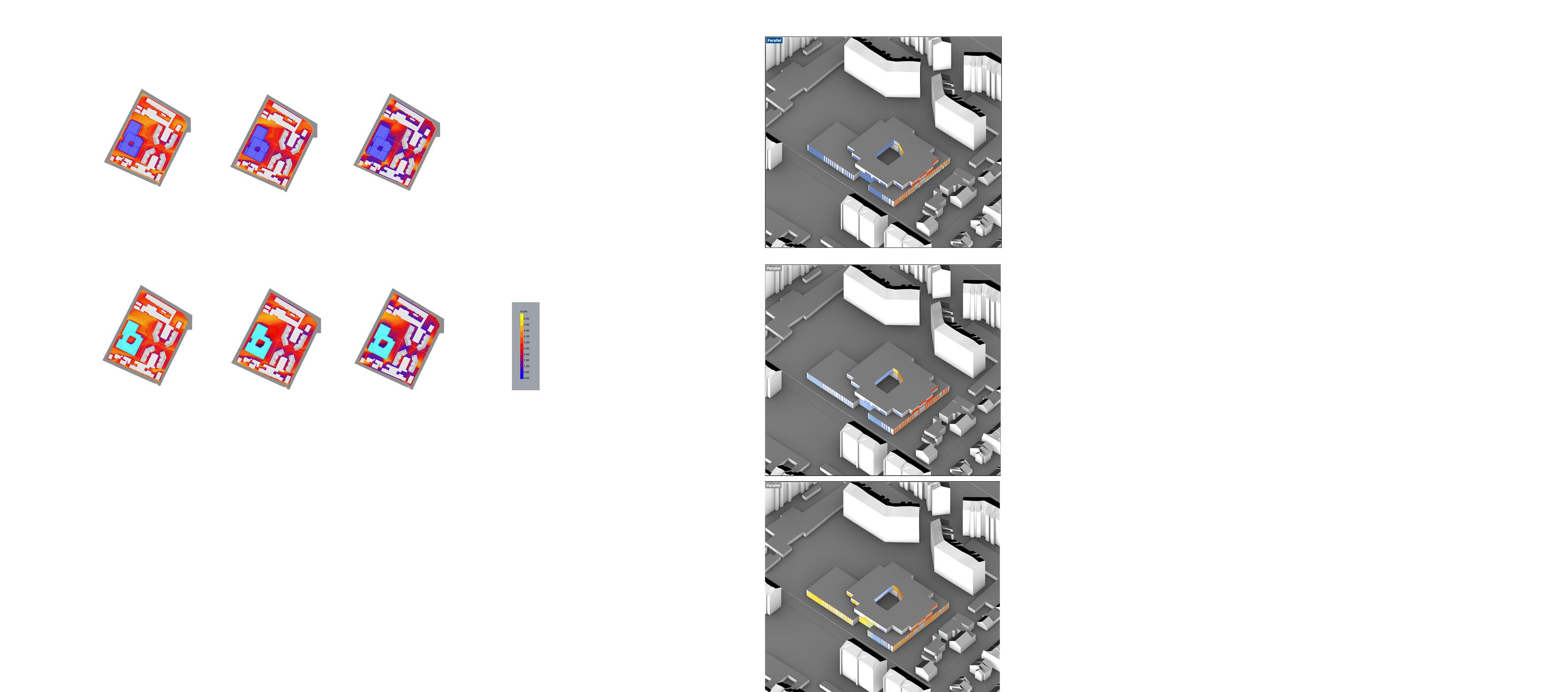





The classroom design prioritizes fluidity and connectivity, allowing for enhanced collaboration, interaction, and experiential learning opportunities. Drawing inspiration from the spectrum of colors found in the rainbow, the design incorporates a dynamic play of light and color to evoke a sense of wonder and curiosity among students.
Partition walls can be opened to facilitate collaboration with adjacent classrooms, promoting cross-disciplinary exchange, teamwork, innovative teaching methodologies, and holistic learning experiences. Extending learning into shared cluster spaces that connect classrooms, fostering collaboration and community among students and educators.
Glass garage doors open to a spacious deck, blending indoor and outdoor learning, while their rainbow-inspired colors enhance lighting and the connection to nature.
























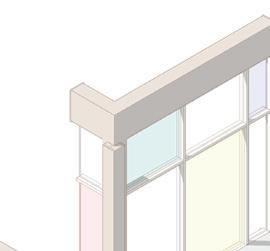


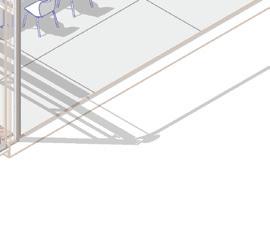

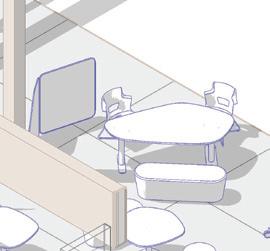
















EXTRUDED COMMERCIAL-GRADE ALUMINUM FRAME TH. 2”
TONGUE AND GROOVE SECTION JOINT WITH LEADING EDGE GASKET SEAL
26. 26. LHR BOTTOM BRACKET
27. 27. STONEWARE TILES 30” X 30” 28. 28. RADIANT SYSTEM SP. 2” 29. 29. NON-LOAD-BEARING CONCRETE SLAB
30. 30. THRESHOLD IN PIETRA SERENA STONE SP. 1/2”
31. 31. NON-LOAD-BEARING AUTOCLAVED CONCRETE BLOCKS
The envelope was designed in efforts to blend in with the surrounding architectural language while simultaneously presenting itself as a modern insert to the city’s image. This effort, in combination with the design intent for a “heavy” aesthetic in the public sphere and a “light” aesthetic on the upper educational, resulted in contrasting facade and structural material choices.
The ground floor utilizes reinforced concrete frame structure, with red-washed Italian limestone panels were implemented on the facade.
On the second floor, steel frame construction was implemented to enhance the lightweight aesthetic. Furthermore, beige- tinted standing seam interlocking vertical brushed steel panels make up the facade.
SECONDARY PRIMARY
To create an immersive learning experience of the building’s structural composition, we developed a physical cross-section model showcasing key rooms within the design. Over the course of two weeks, we engaged in a meticulous modeling process, examining intricate details—including the functionality of the garage doors within the classrooms. The resulting model measured 58 inches in length, 24 inches in width, and stood approximately 3 feet tall. This hands-on exploration of building systems and their interconnections provided invaluable insights, significantly deepening our understanding of construction and design integration.



YEAR 3.1
The Blurring Lines multi-purpose building was designed to serve a unique mixture of residential programming and public community spaces such as galleries, classrooms and more. The overall aesthetic of the structure was designed in effort to blur the lines between Wichita’s quickly evolving Old Town city space and the less-evolved downtown The unique opportunities for community engagement, comfortable living, educational, and corporate function while experiencing activation of the past and present aesthetic of Wichita will be a definitive and exciting new build on the corner of S English St and Broadway Ave.


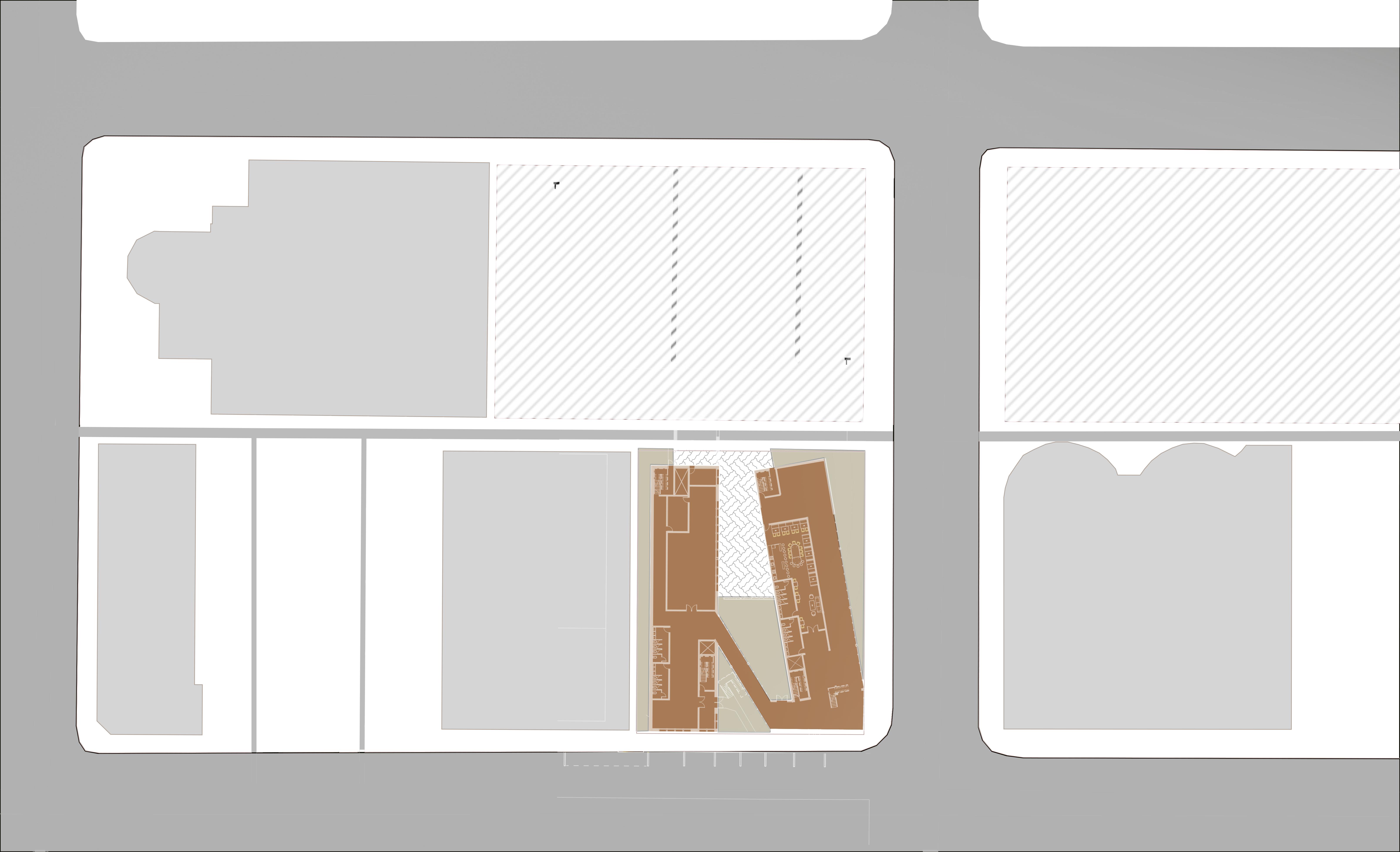
PRIVATE VS. PUBLIC SPLIT
THE SOUTH-FACING BUILDING IS FURTHER DISTINGUISHED BY A 15-DEGREE ROTATION.
UNIFY LINKING PUBLIC, PRIVATE

UNIFY CIRCULATION BY PUBLIC, SEMI-PRIVATE, AND PRIVATE SPACES.
04 05
THE SOUTH-FACING RESIDENTIAL BUILDING IS VERTICALLY EXTRUDED TO MEET PROGRAMMING DEMANDS.
PRESERVATION OF OLD TOWN + MODERN DOWNTOWN LIVING

REPRESENTED THROUGH MATERIAL + FORM
Deliberate distinction between public and private spaces 1. PRIVATE
To serve both the community and residents simultaneously, open circulation is created through bridges
CIRCULATION (ELEVATORS + BRIDGES) EGRESS
The materials that dominate each area are incorporated into the facade’s of the building with the old town brick defining the public form, and the concrete/ aluminum style showing on the residential, south facing form.
STRUCTURAL GRID
The ground floor serves as a dynamic, 24-hour community hub, promoting connectivity and lifelong learning. Its open layout centers around a courtyard, ensuring easy access to a gym, library, cafeteria, and labs. Designed for accessibility and inclusivity, the labs integrate seamlessly with public spaces, breaking barriers to education and fostering community engagement.
Exhibition space to highlight and expose the user to the up and coming arts scene in downtown Whichtia, as well as historic art that can serve to teach about their past and preserve it.
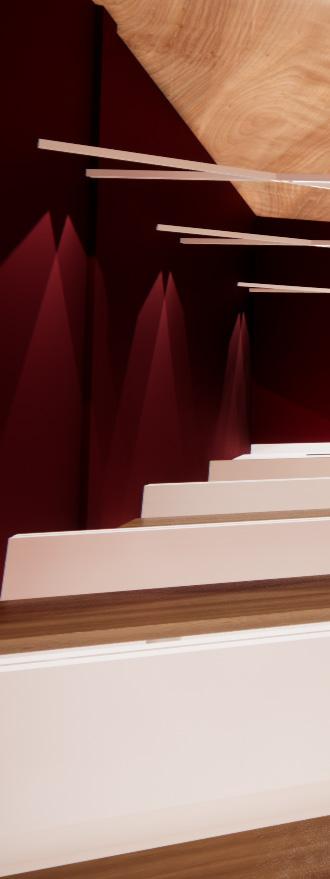


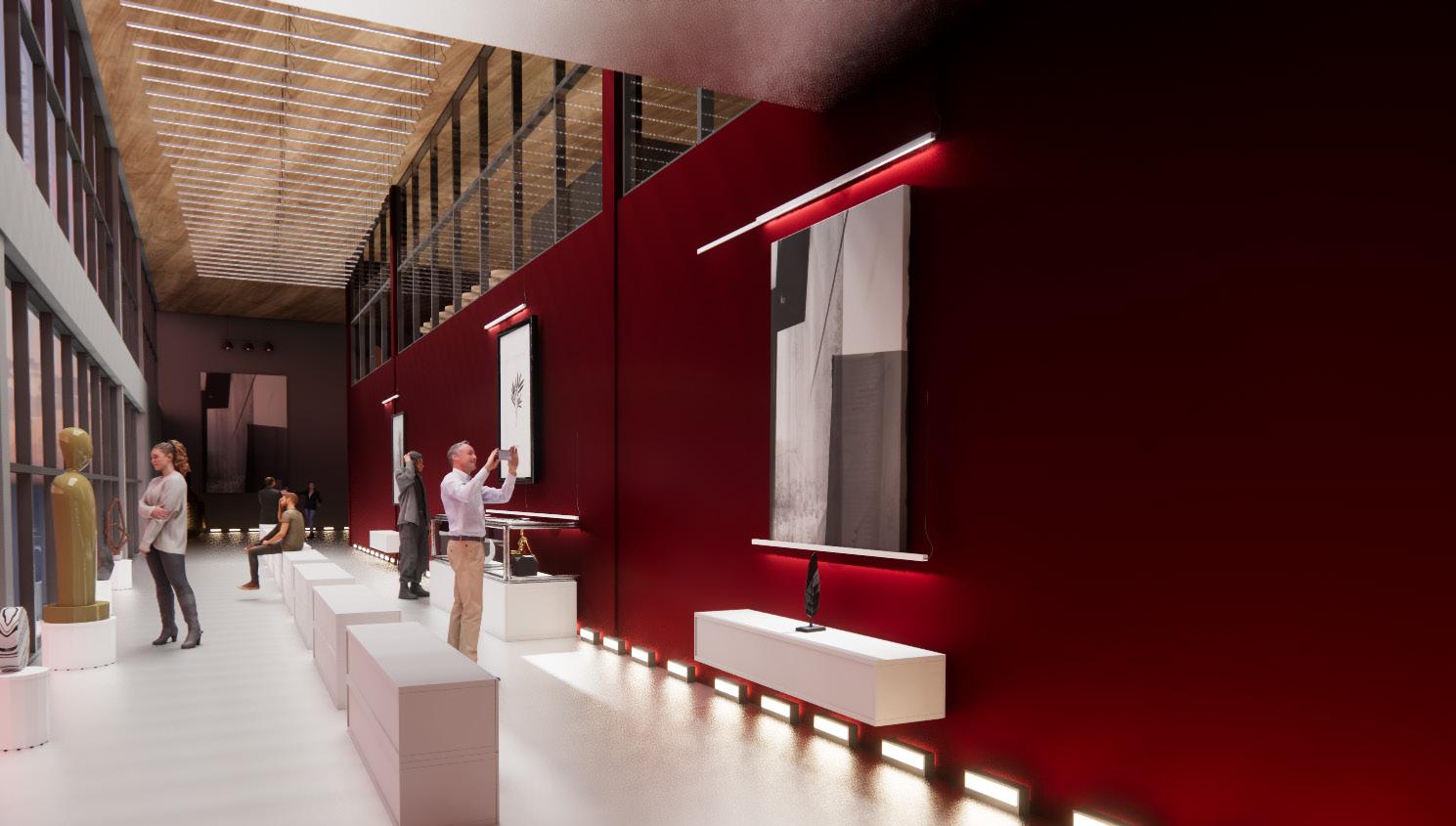

GROUND FLOOR

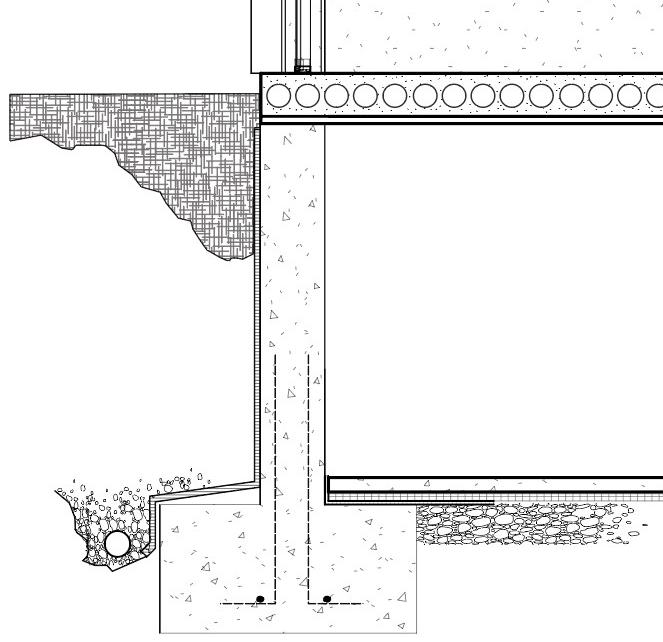

YEAR 2.2
The goal of Hoop Unbroken was to create a visitors center for Haskell Indian Nations University. One that would effectively, naturally insert the viewer into such a secondary world by creating life sustaining and life enriching architecture for a world in which the bustling campus lifestyle distances students from their ties with the natural environment. Secondly, the structure was designed to meet the demands of serving not only the native student community, but volunteers from the Haskell Foundation, as well as employees of the building itself; serving to connect all through a symbolic design that represents the beliefs and efforts of all.








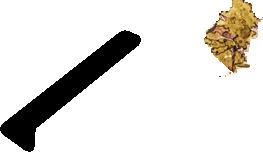





“So long as the hoop was unbroken... the people flourished.” A focus on combining the radial design intent with the Native American teachings of the “hoop” that is seen in the Haskell Foundation’s logo.



01 02
BEGIN FORM CONCEPTUALIZING FOLLOWING THE “HOOP”
CREATE TWO FORMS RESEMBLING “FEATHERS”
SHAPE THE NORTHWEST EDGE INTO AN AMPHITHEATER
03 04 05 06
ADAPT SECOND FLOOR FORM TO MATCH THE FORM OF THE FLOOR BELOW
RAISE FORM AND CREATE SECOND FLOOR TO FIT THE PROGRAM
SLANT NORTH-MOST ROOF FOR WATER RUNOFF
For this project, I pushed the boundaries of my architectural style, using drawing to explore new design possibilities. This process deepened my understanding of spatial relationships and their impact.


Inspired by my passion for the arts and the diverse mediums found in architecture, I refined my drawings by blending watercolor painting with digital enhancements in Photoshop, creating a more expressive and dynamic representation of the project. MIXED -
















YEAR 2.1
The Native Nature Center was designed with the purpose of creating a beneficial space to serve The Friends of the Kaw, with the focus placed upon the rehabilitation of the Kansas Rivers Environment. Each step of the design process was guided by the goal of creating a structure that would have minimal negative impact on the surrounding environment. The overall form is slender and holds the majority of its mass right off the path behind the tree. It features tensile observation decks lying at the front and back faces.


The rear deck is enclosed by the canopy of surrounding trees, while the front deck projects forward with views upward towards to Eastern Cottonwood. Skylight windows in the entry and classroom spaces also offer a similar experience within the structure itself.


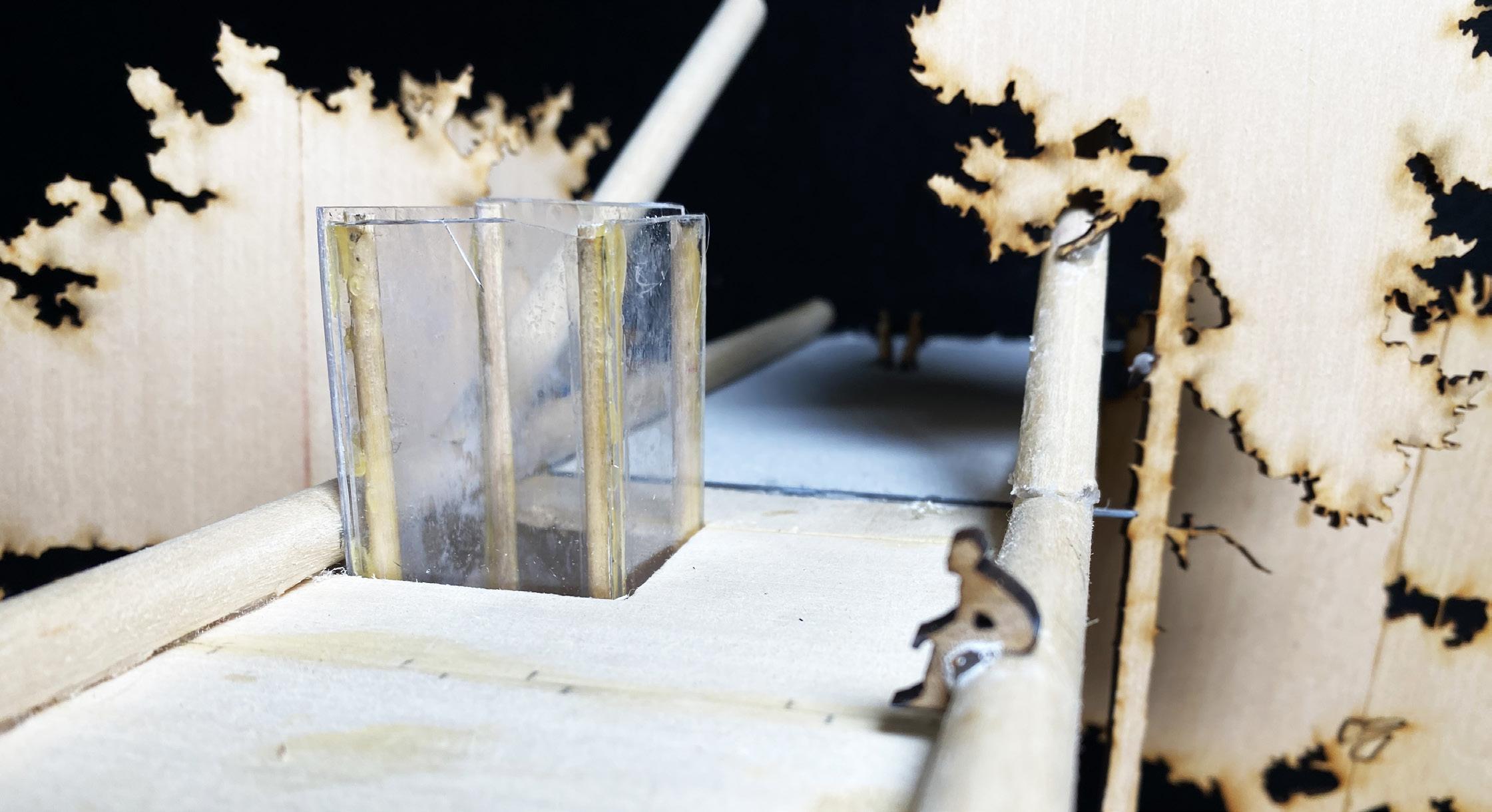
SOUTHERN EUROPE + MOROCCO
YEAR 4
LedbyNilouVakil
The “Where Learning Meets the Rainbow” secondary school project epitomizes a visionary approach to the evolution of educational and public service environments Informed by the dynamic needs of its users, particularly the student body, the project prioritizes empowerment, collaboration, and a profound connection with the natural world.
Central to the proposal is the deliberate creation of inviting spaces that foster community engagement and harmonize with the surrounding environment. Drawing inspiration from the concept of an educational village atop a public service nucleus, the architectural form embodies both functionality and symbolism.







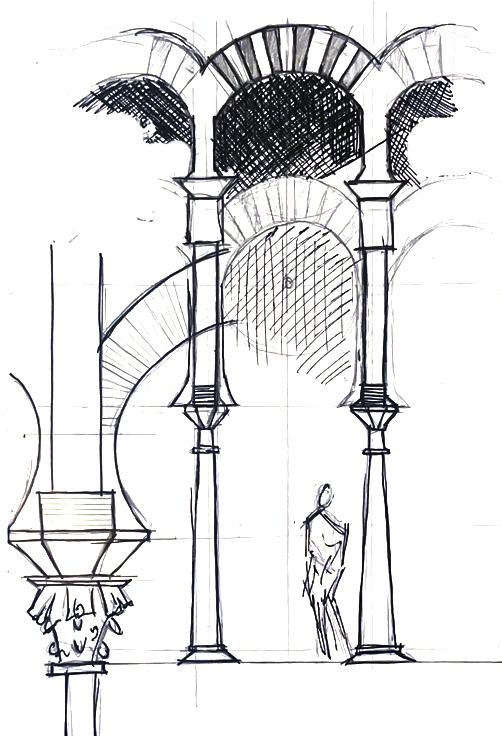
CORDOBA MOSQUE- CATHEDRAL

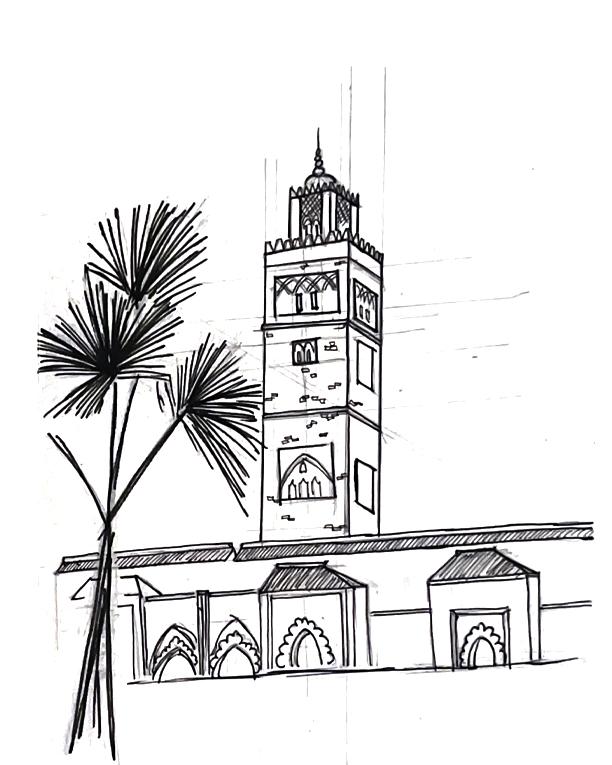

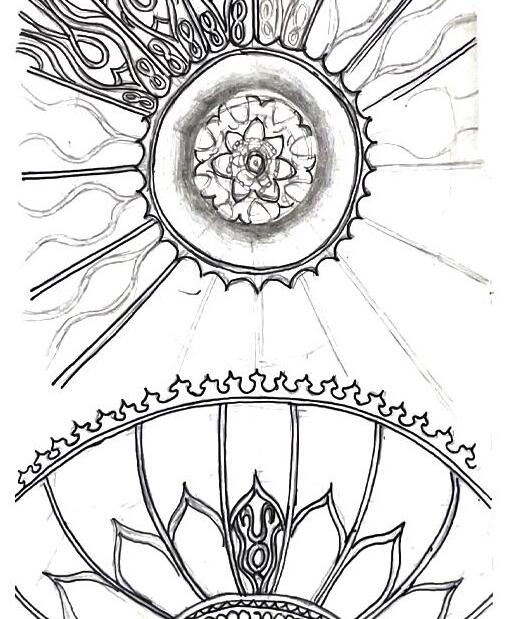
Gastinger Walker&
During my internship at GastingerWalker&, I contributed to a variety of projects, refining my skills in 3D visualizations, developing client presentation diagrams, and gaining hands-on experience in landscape design, field verification, and zoning and building code analysis. I also engaged in client interactions, strengthening my communication and problem-solving abilities, as well as exploring A.I. capabilities and opportunities.
The most impactful projects for my professional growth included the Washburn Henderson Learning Center, Indian Hills Community College Baseball Field, and Fareway Meat Market on Ward Parkway. Additionally, I gained valuable insight into architecture marketing, working on the development of new template designs for look books and RFQs, enhancing the firm’s branding
IMAGES:
Indian Hills Community College: In collaboration with INVISION Architecture
A.I. Exploration: PromeAI utilized in post- production rendering

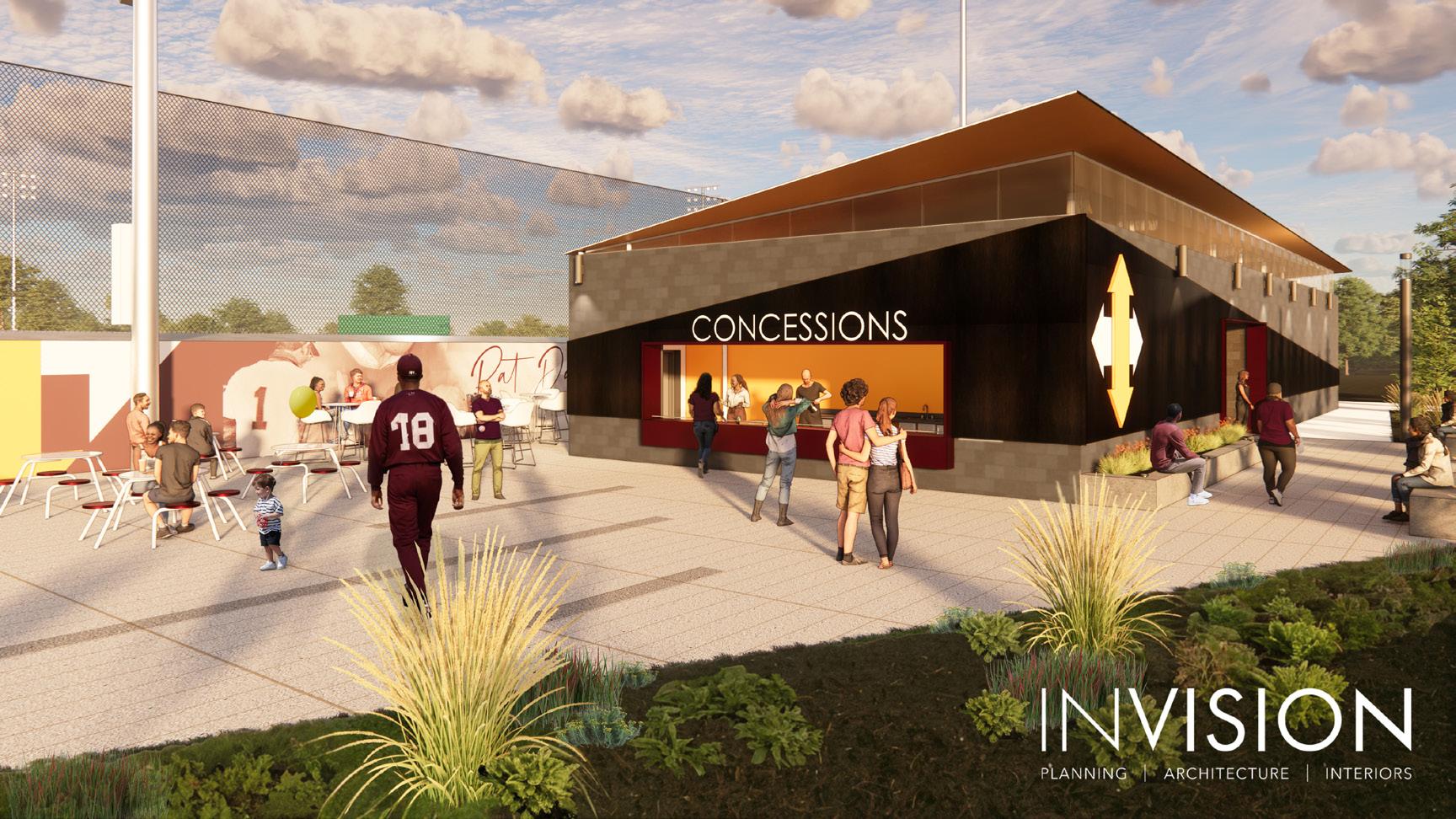

Urban Stadium Development
The University of Kansas + Co-Op studio is a 9 month program, providing students with a professional experience in design research, creative thinking, long distance virtual collaboration and interdisciplinary and expressive global communication.
Stadium developments in urban environments are significant undertakings that dramatically impact the functionality of adjacent cityscapes.
With more stadiums being proposed in densely populated urban areas, what role do architects have in shaping public discourse?









@loaf.paints
During the pandemic, I began running a commissioned art page titled @loaf.paints on Instagram. Running full-time until 2021, and when available currently, I have been blessed to have the opportunity to work with The Vintage Hawks & the Willow Center (water bottle giveaway contest), Habitat for Humanity (mural), J31 Dance Studio (team jackets), student-led activist organizations during the Black Lives Matter Movement,



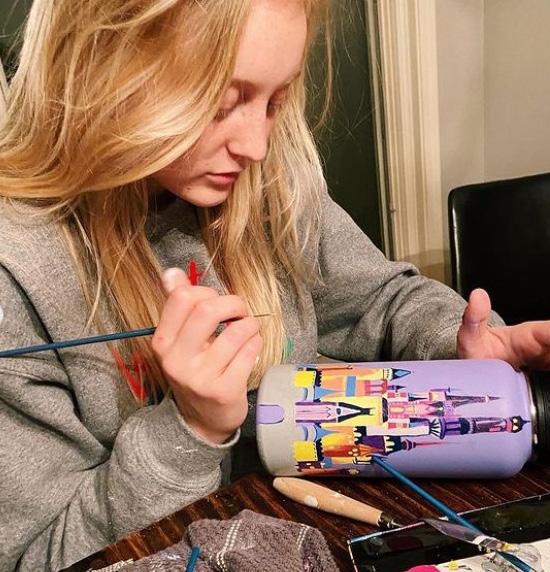








“If
you want to change the world, you have to change the way people think. That’s what architects do.” – Bjarke Ingels
